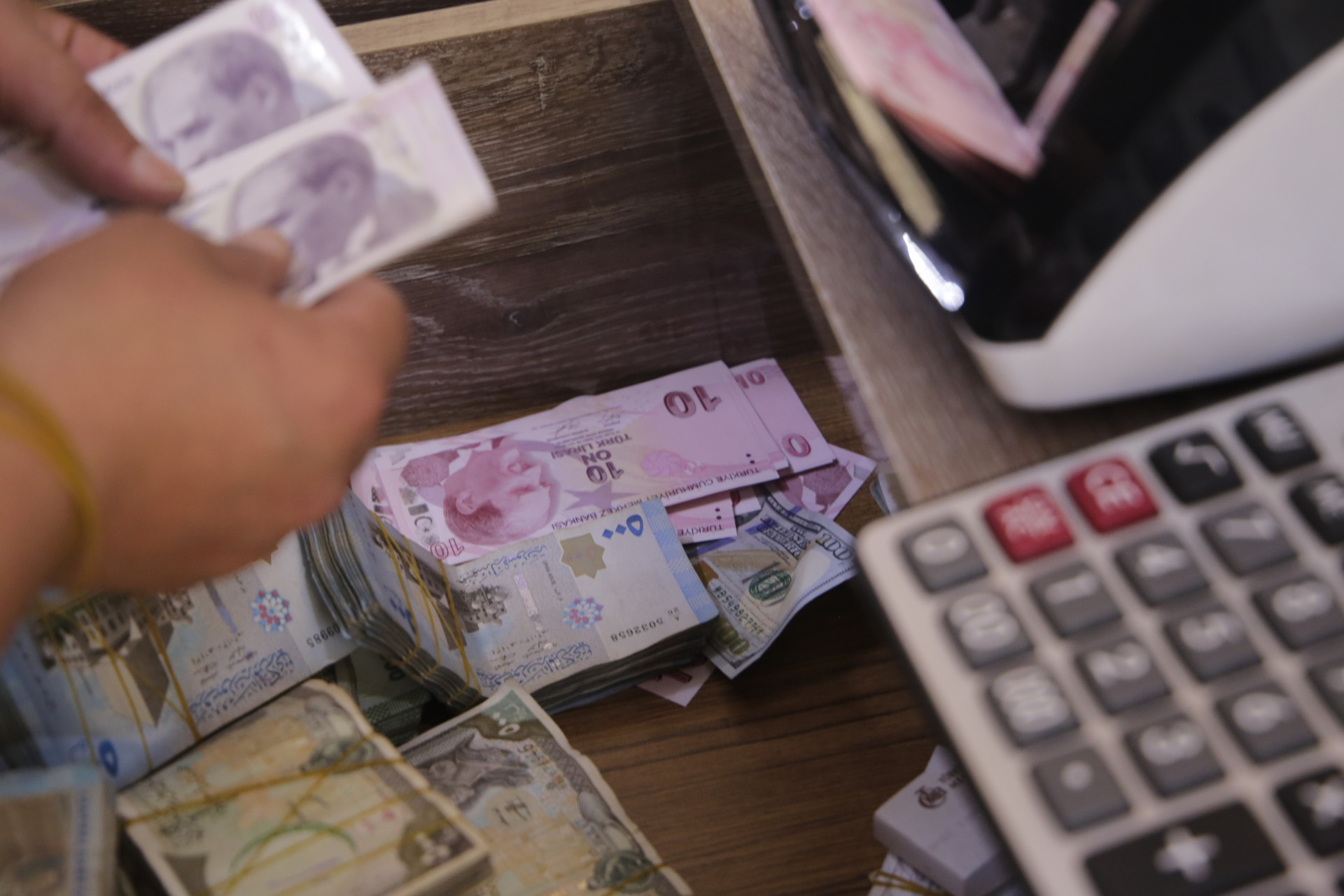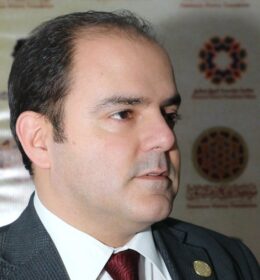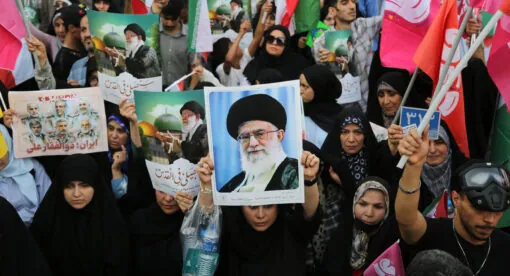The Syrian lira seems to be in a freefall, dropping to around 3,000 to the U.S. dollar, compared to 50 a dollar 10 years ago. This dramatic depreciation of the currency, unprecedented in the country’s history, is causing prices to soar tenfold. As a result, opposition-held parts of the Syrian northwest have started to switch to the Turkish lira.
The Syrian lira has been a central part of the country’s political history. Indeed, Syria’s history of foreign encroachment is intimately bound with the history of currency. The adoption of Turkish currency is a highly symbolic step in the direction of Syria’s territorial disintegration. Given the proximity and economic clout of Turkey, a geopolitical heavyweight, it may present a new, permanent geostrategic reality with which the United States must contend.
The latest transition to the Turkish currency has happened mostly in areas first occupied by Turkey in 2016-2018, including the towns of Jarablus, Azaz, al Bab, and Afrin, as well as parts of Idlib and small pockets in the countryside of Aleppo. In these cities and towns, Turkish flags had already become commonplace, as had Turkish history books, license plates, and pictures of Turkey’s president, Recep Tayyip Erdogan. Shipments of Turkish currency were made into Syria over the past week, in five, 10, and 20 lira banknotes. Some shops in the northern countryside of Aleppo now display prices in Turkish lira, while fighters and bureaucrats on the Turkish payroll are being paid in Turkish currency.
This is the first time that Turkish currency has been adopted in Syria since the collapse of Ottoman rule back in 1918. The return of the Turkish currency has profound symbolic significance, as the emergence of the Syrian currency was intertwined with the formation of a unified Syrian national identity.
A History of the Syrian Lira
When the Ottoman army withdrew from Damascus in September 1918, people frantically threw their Turkish money into the gutters, leading to its devaluation by 12 percent, as recorded by British army intelligence officer and colonial administrator Gilbert Falkingham Clayton at the time. A variety of foreign currencies appeared on the Syrian market, mainly the Egyptian and British banknotes brought in by the invading British Army. Even though a Syrian Ministry of Finance was established, it failed to mint its own money, which led merchants to rely on a basket of foreign currencies instead.
The Egyptian pound was equal to the sterling — issued by the British-owned Bank of Egypt — but Syrian exchange booths took it at discounted value to gold, causing businesspeople to prefer using British currency. The penny, a British decimal coin equaling one-hundredth of a pound sterling, became common in ancient markets of Damascus. (Elderly Syrian businessmen today still use old references, like “we will pay you down to the pence”, and the Syrian informal word for money — “masari” — also originates from the word “Masri,” meaning “Egyptian.”)
The new Arab government of 1918 led by the British-backed Prince Faisal Ibn al-Hussein, who later became king of Iraq, demonetized Turkish banknotes but kept using Turkish coins, colloquially known as the mejidi, named after Sultan Abdelmejid. Government salaries were paid in Ottoman gold until the first Syrian coins were minted in late August 1920, four weeks after the French invasion of Syria. The new money was issued by the Paris-based Banque de Syrie et du Liban, the only regulatory authority of the time, and it was firmly pegged to the French franc, with one Syrian lira equaling 20 francs. Syrian banknotes were also redeemable on checks in Paris.
The Syrian lira was divisible into 100 quroosh. On the exchange market, 54.7 Syrian quroosh equaled one U.S. dollar. That rate suffered a major blow during the Syrian uprising against French rule, known as the Great Syrian Revolt, which led to a sharp devaluation in Syrian exports, a rise in imports, and the destruction of Damascus markets by the French in 1920. The currency collapsed, to 202 quroosh to the dollar. By 1928, the French had managed to fix it at 127.5 quroosh to the dollar, a rate that lasted until World War II.
During the interwar years, Syrians continued to fix their major transactions in Turkish gold. That was due both to its stable value and to their anger with French colonialists. Many of the notables who handled Syrian politics and economy were groomed during the Ottoman era and had known no other currency in their lives. When they created the Ayn al-Fijja Company in 1924, bringing clean running water to Damascus from a nearby spring of freshwater, the cost of the project was fixed at 150,000 Ottoman gold.
Six years later, Syrian notables set up the National Cement Company, revenue from which would be used to bankroll the anti-French nationalist movement. It was formally capitalized at 144,000 Ottoman gold coins, divided among 24,000 shares. Two years later, they set up the National Conserves Company, capitalized at 30,000 Ottoman gold, distributed among 15,000 shareholders. The founders of these companies were the very political leaders who had worked against the Ottomans in 1918. The currency was a vital tool in their fight against both.
Turkish gold started disappearing from the Syrian market with the 1939 annexation of the Sanjak of Alexandretta, fertile territory that was conceded by France to Turkey to secure its support — or neutrality — in the upcoming war in Europe. When the French Army evacuated from Syria in 1946 at the end of World War II, it became a crime to trade in anything but Syrian currency, and all local companies were ordered to amend their founding documents, replacing Ottoman gold and French francs with Syrian liras.
Despite the political turmoil, Syrians held on to their local currency throughout the 1940s and 1950s, setting up the Central Bank in 1956 to issue Syrian currency. Colorful banknotes were printed in Europe and distributed in Syria, with pictures of Syrian historical figures and the emblem of the republic, the “hawk of Quraish”, the tribe of Prophet Mohammad, supporting a shield with a vertical Syrian Flag.
The bank’s first governor, Izzat al-Tarabulsi, famously refused to merge the Syrian lira with the Egyptian pound during the short-lived Syrian-Egyptian Union of 1958-1961. Egyptian president Gamal Abdel Nasser tried hard to push through with a currency merger, but al-Tarabulsi refused, saying the lira was a symbol of national pride and honor.
Devaluation and the Syrian National Identity
That argument remained a given until early June of this year, when Turkish banknotes made their way back to Syria. Such a move would have been inconceivable before the conflict, but there was little that people could do due to the dramatic drop in the national currency and erosion of their purchasing power. At the same time, there is little hope that the Turkish lira, which also has recently fallen to record lows against the U.S. dollar, can help salvage the Syrian economy.
The Syrian lira has been part of the tumultuous history of the nation and part of the national battle for formation of the state and its identity throughout the past century. Today, Syrians see Turkish flags, pictures of public figures, and currency dominating the north, and find themselves confronting some of the same challenges that faced the country during its formative years. Without the reconsolidation of a national currency, it will be difficult to conceive of the same unified Syria that emerged against daunting odds following the Ottoman collapse.
Policymakers will likely have to adjust their aspirations and expectations accordingly. Without the reconsolidation of a national currency, it will be difficult to piece the country back together — let alone shelter it from any future Turkish intervention. It will also be difficult to conceive of the same kind of country that emerged against daunting odds following the Ottoman collapse.
Sami Moubayed is a Syrian analyst and historian, and author of “Under the Black Flag: At the Frontiers of the New Jihad” (IB Tauris, 2015).
The views expressed in this article are those of the author and not an official policy or position of the Newlines Institute.






